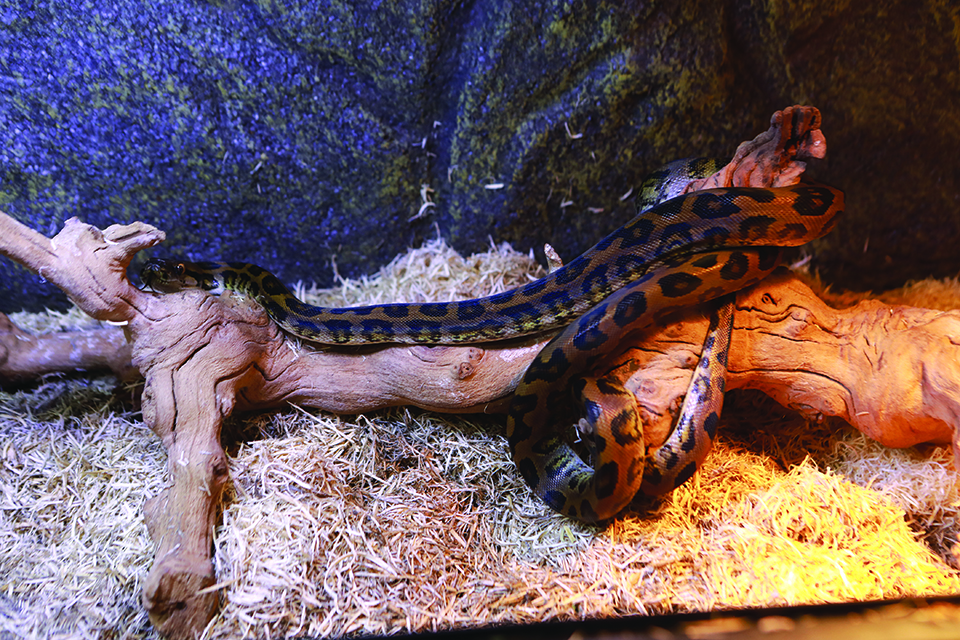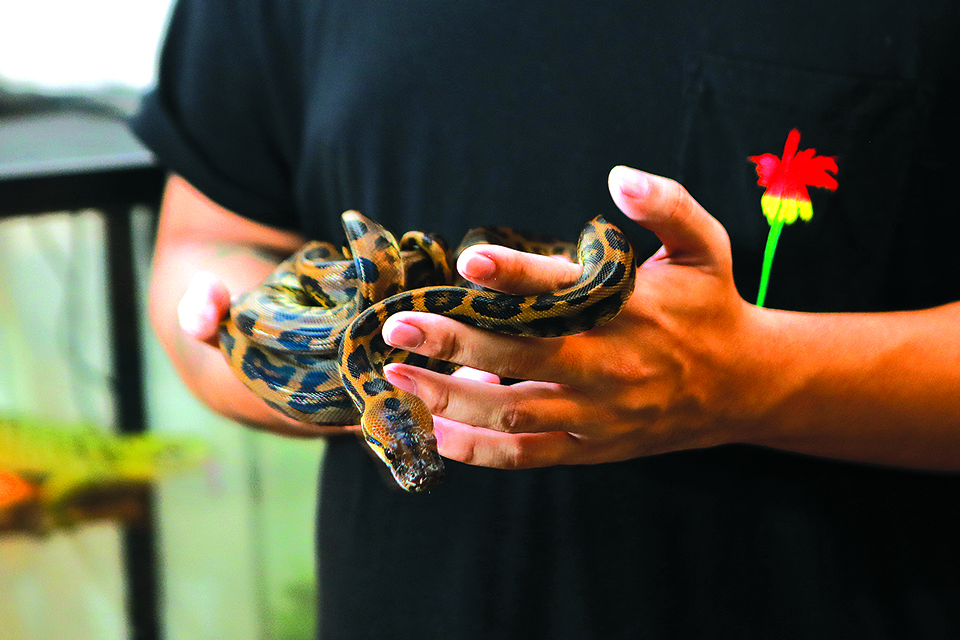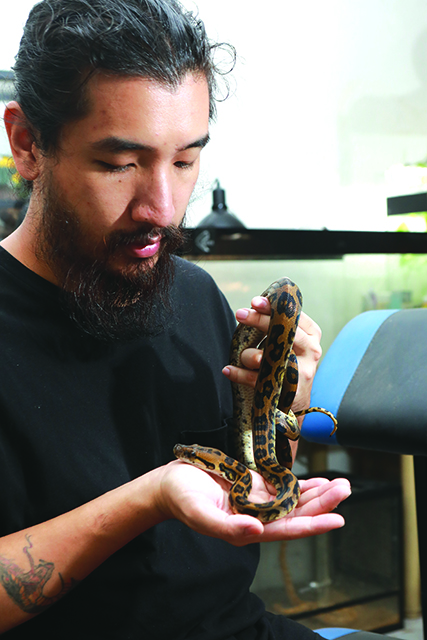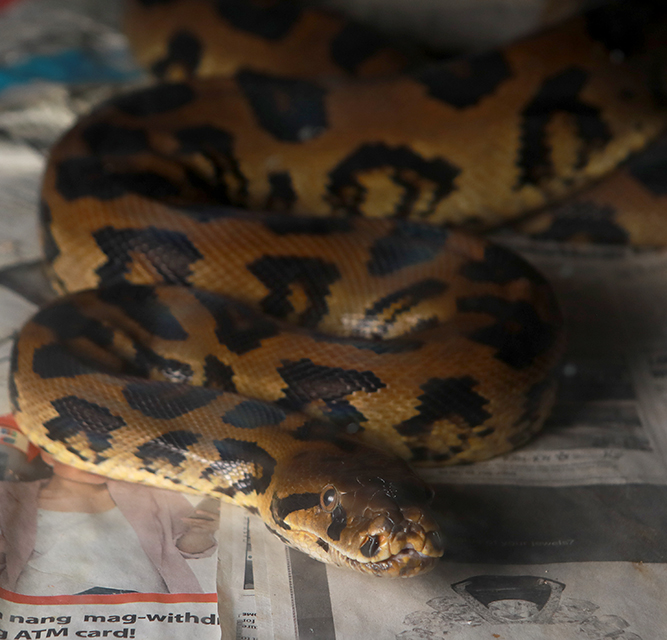AN INTERESTING HYBRID SNAKE

Hybrids are defined as the offspring of two different species, resulting in a mix of characteristics from each parent. These hybrid animals are rarely seen in nature.
The Bat eater is a unique snake hybrid that has emerged only recently. This hybrid comes from a Burmese and a Reticulated Python, two large species in Asia. Local reptile expert Lendl Lin from ZooMed Philippines tells us more.

THE HYBRID EQUATION
“Hybridization happens when two different animal species, usually under the same genus, mate and reproduce,” explains Lin. While it usually happens in captivity, it can also happen in the wild, especially among fishes, mammals, and other reptiles. Such wild hybrids are usually called intergrades.
For instance, there are wild hybrid Sailfin Lizards – the H. Pustulatus and H. Weberi in Asia have been observed to mate, probably because the islands are close together and because these two species cross over to each other’s territory.

WHAT MAKES THE BAT EATER FASCINATING?
Lin: [T]hey are special because they are hybrids, [which is] something we won’t see much in the wild.
[This snake also] has a very attractive pattern and coloration. They [look] more like Reticulated than Burmese Pythons.
HOW DO THEY EAT?
L: In my experience, Bat Eaters are very active hunters, and [it’s] as if [they] never get full, always looking for an opportunity to eat. [They] remind me of the Indominus Rex of Jurassic World: active, smart, and [with] a voracious appetite. They… can take down prey larger than their body mass.
They also grow very large, just like the Reticulated and Burmese Pythons

WHAT PHYSICAL TRAITS MAKE THEM STAND OUT?
L: The patterns and eyes are quite different from [those of] the python species [from whom they originated]. They have a wild pattern, which [means that] Bat Eaters look different from each other.
IS IT CHALLENGING TO CARE FOR A HYBRID?
L: They are hyperactive and have a very strong feeding response – just like Reticulated and Burmese Pythons [but with twice the food drive].
I never encountered physical deformities with hybrids, [but they may] occur in reptiles if the incubation is wrong.
WHAT SHOULD PEOPLE KNOW ABOUT HYBRIDS BEFORE THEY CARE FOR ONE?
L: Having hybrids, we should be responsible enough to keep them [indoors] and not release them in the wild, because it [may affect] ecosystems. However, their existence is a threat only if they continue to mix – and further decrease the population of – endangered animals.
DID YOU KNOW?The Bat Eater might have been around for more than a decade.

DANGERS AND DRAWBACKS
Hybridization can have certain drawbacks, according to Lin. “One negative impact is that it affects endangered animals, [such as when] the endangered Philippine Crocodile [was] hybridized with the common Saltwater Crocodile as [there were certain territories that they shared].”
Photos by JEFFREY LIM






